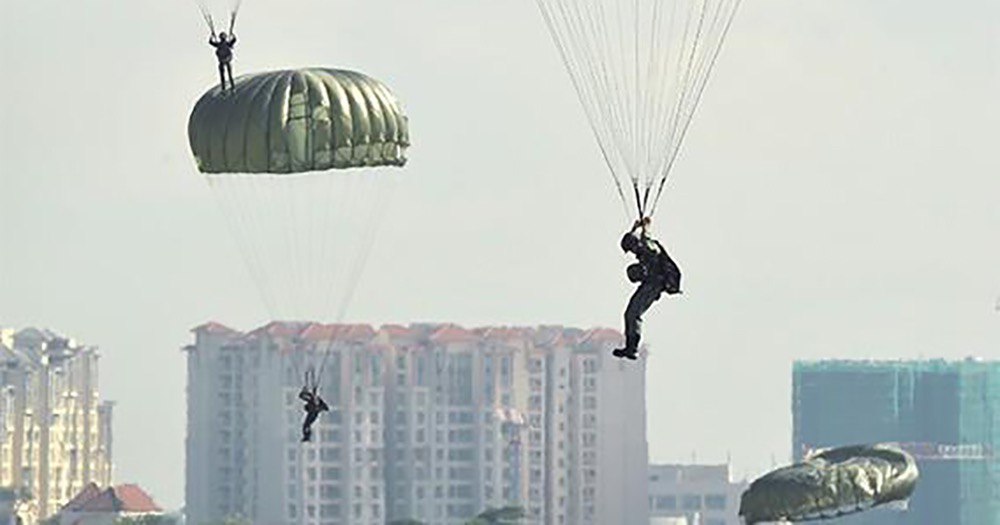The cervical spine injury sustained by a 21-year-old Singapore Armed Forces (SAF) full-time national serviceman (NSF) was the result of a cord sweeping across his neck as he exited from the aircraft.
Although there is an ongoing formal enquiry, Defence Minister Ng Eng Hen was able to share some details in a written reply in Parliament on Jan. 6.
On Dec. 18, 2019, PTE Joshua Quek was taking part in a night static line parachute jump as part of the Basic Airborne Course (BAC) when the accident occurred.
Undergone two surgeries
Despite suffering injuries, Quek successfully landed within the designated landing area.
He was attended to immediately by SAF's on-site medical officer, and then evacuated by the on-site ambulance to the nearest tertiary hospital.
Quek has since undergone two successful surgeries on Dec. 19 and Dec. 21, and is currently in ICU for close observation.
Ng shared that Quek's injury resulted in neurological deficits, including weakness of his upper and lower limbs.
Family informed, reunited with Quek
Quek's family was informed on the night of the incident. His mother was flown to the hospital the next day, and was joined by his father and brother a few days later.
He is currently conscious, alert and able to breathe on his own and speak to others. He has also partially recovered motor functions after the second surgery.
However, he will require long-term rehabilitation and physiotherapy to reduce the damage from his injury and recover.
A team of SAF doctors are currently with specialists at the hospital to monitor and assess Quek’s condition.
He will return to Singapore once specialists have deemed it is safe for him to fly.
What happened during the jump?
Jumpers' parachutes are attached to the aircraft by a cord called a "static line", which becomes taut, and deploys their parachutes automatically as they exit from the aircraft.
However, Quek's injury was the result of the line interfering with his exit from the plane as it was too slack -- a "known risk" called "static line interference".
Preliminary findings suggested that the static line was not pulled taut as required, and investigations are underway to determine why this happened.
Ng mentioned there are established safety protocols and drills for both the jumper and the jump-master to prevent static line interference.
For all jumps, a qualified jump instructor is on board the plane, along with two qualified Jump Masters at the exit door to ensure that safety measures are in place.
Quek previously completed four static-line jumps
Ng noted that Quek had successfully completed four previous static-line jumps prior to the day of the incident, which was his final jump for the course.
He had also successfully undergone the requisite pre-jump qualifications, training drills and safety briefs prior to taking part in the jumps, including the specific jump on Dec. 18.
Ng further pointed out that this was the first known "static line interference" incident to have resulted in serious injury.
The SAF conducts about 6,000 static line parachute jumps every year and that about 27,000 BAC trainees have been graduated by the SAF since its inception in 1974.
All static line parachute jumps have been suspended amidst a pending investigation by a formal Board of Inquiry, supported by the SAF Inspector General's Office, into the incident.
Said Ng: "Static line parachute jumps will remain suspended until the completion of the formal inquiry and only resumed when their recommendations have been implemented."
Related story:
Top image from Mindef Facebook
If you like what you read, follow us on Facebook, Instagram, Twitter and Telegram to get the latest updates.
